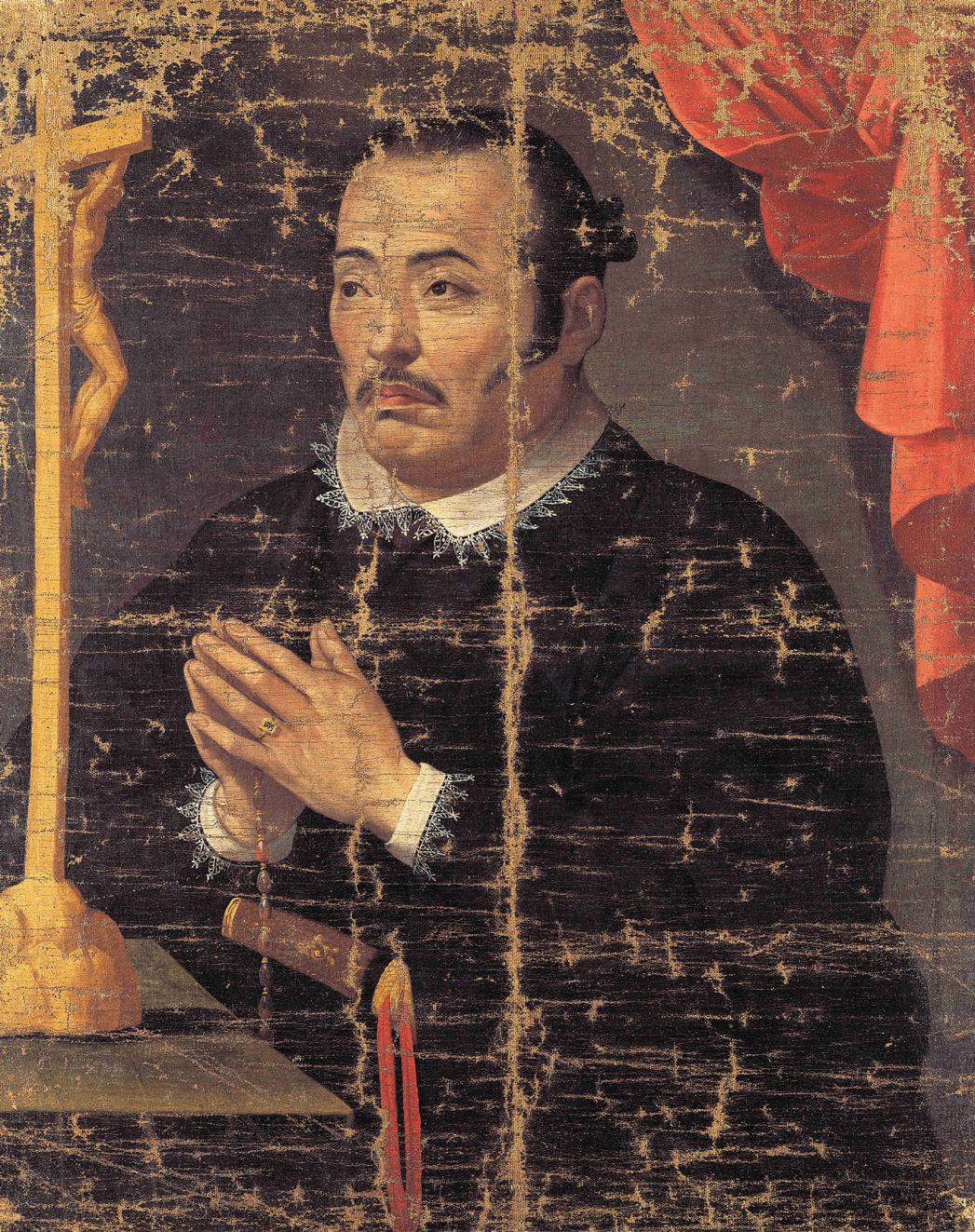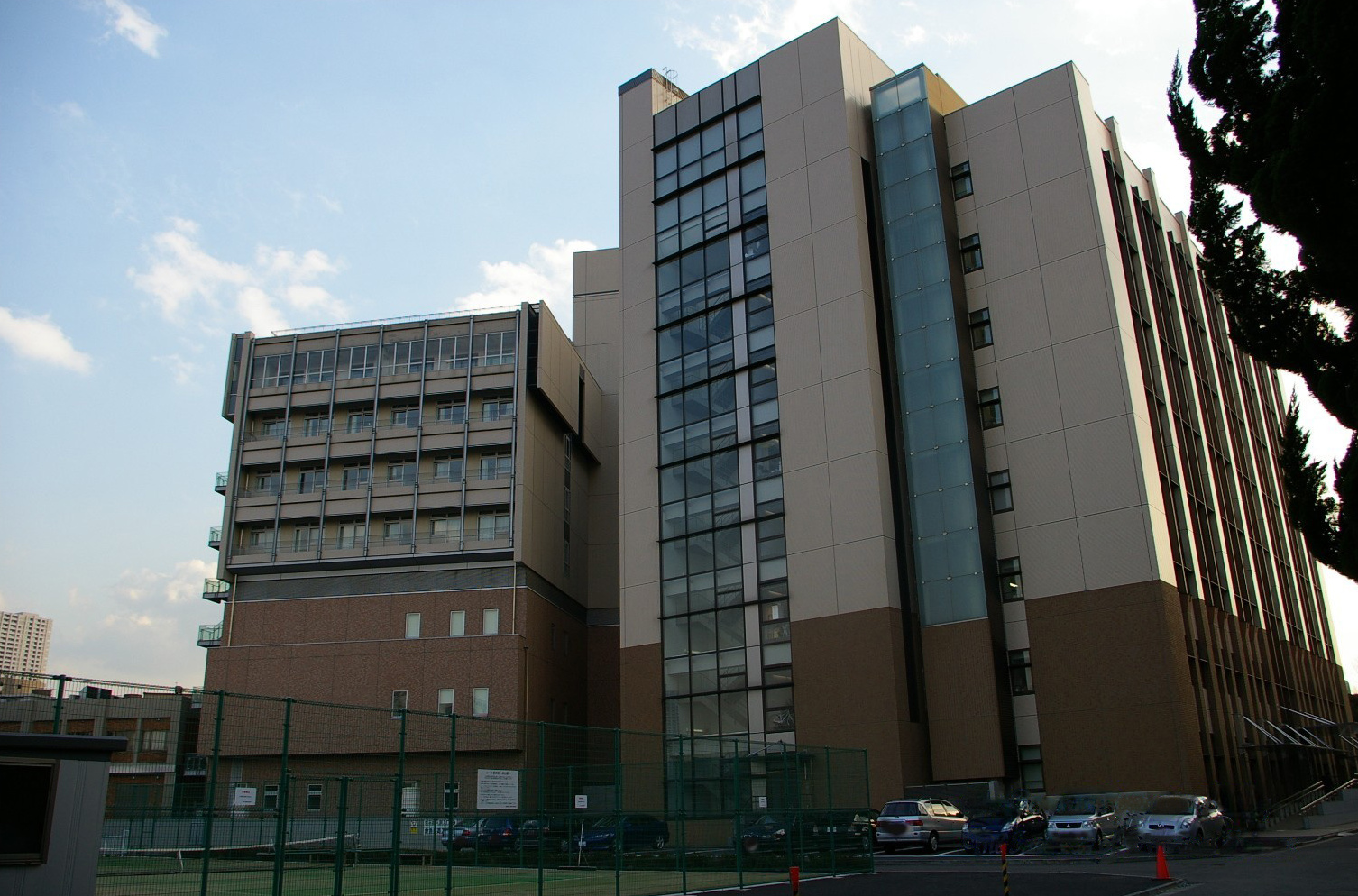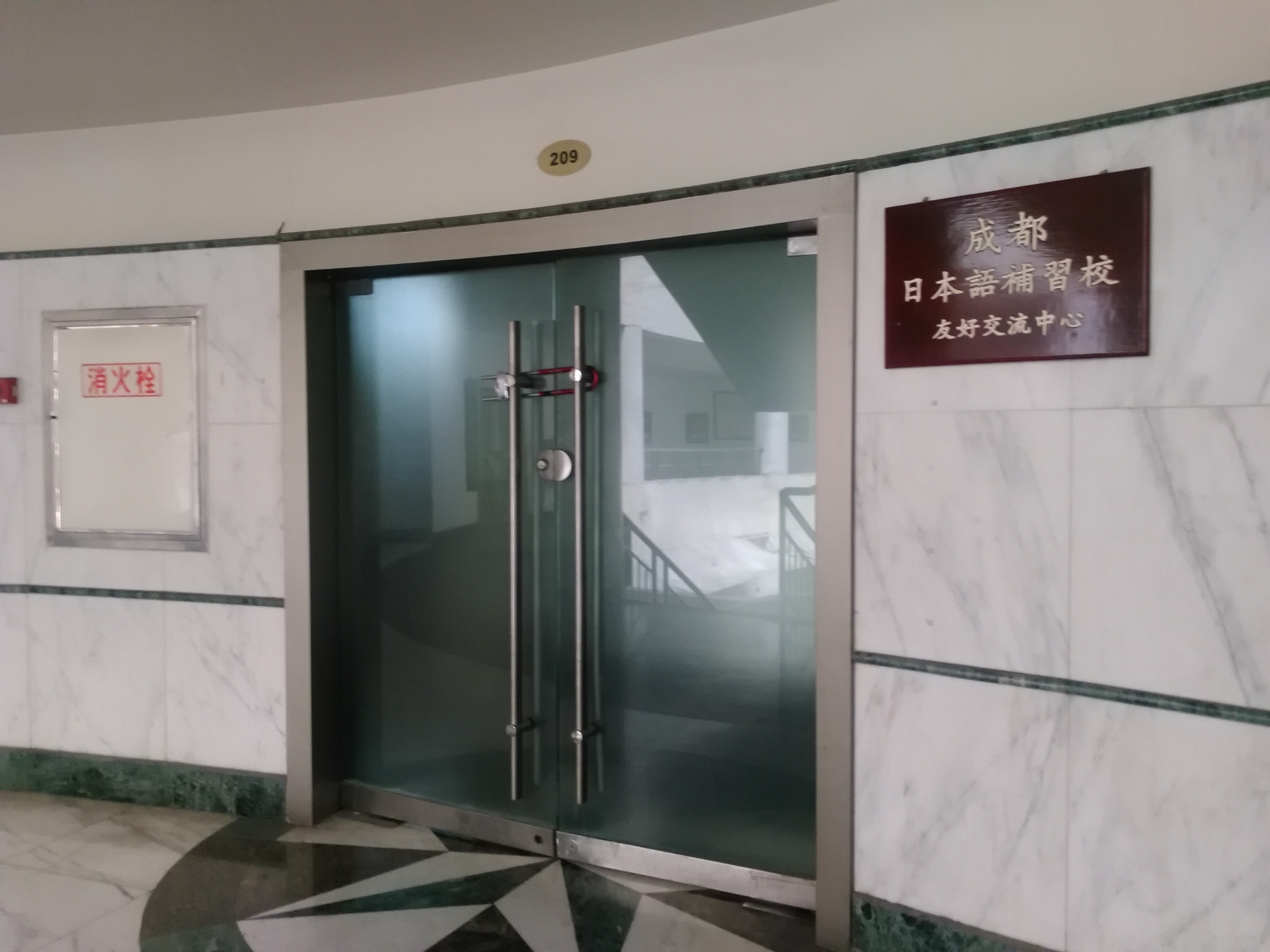|
Japanese People In Spain
Japanese people in Spain consist largely of expatriate managers in Japanese corporations, as well as international students. There are also some people of Japanese ancestry in Spain, including descendants of 17th-century migrants to Spain, as well as migrants from among Nikkei populations in Latin America. According to Spain's National Statistical Institute, 4,898 Japanese citizens resided in the country ; Japan's Ministry of Foreign Affairs gave a higher figure of 8,080 . History The first Japanese people to settle in Spain were the members of an embassy led by Hasekura Tsunenaga. Instead of returning to Japan in 1617, six samurai remained in Coria del Río, near Seville. The surname ''Japón'' (Spanish for "Japan") is conserved among approximately 700 inhabitants of Coria del Río, identifying them as descendants of the members of Hasekura Tsunenaga's delegation. The first Japanese business established in Spain was SANYO España.S.A. in 1969. Since then Catalonia became th ... [...More Info...] [...Related Items...] OR: [Wikipedia] [Google] [Baidu] |
Madrid
Madrid ( , ) is the capital and most populous city of Spain. The city has almost 3.4 million inhabitants and a Madrid metropolitan area, metropolitan area population of approximately 6.7 million. It is the Largest cities of the European Union by population within city limits, second-largest city in the European Union (EU), and its wikt:monocentric, monocentric Madrid metropolitan area, metropolitan area is the List of metropolitan areas in Europe by population, third-largest in the EU.United Nations Department of Economic and Social AffairWorld Urbanization Prospects (2007 revision), (United Nations, 2008), Table A.12. Data for 2007. The municipality covers geographical area. Madrid lies on the Manzanares (river), River Manzanares in the central part of the Iberian Peninsula. Capital city of both Spain (almost without interruption since 1561) and the surrounding Community of Madrid, autonomous community of Madrid (since 1983), it is also the political, economic and c ... [...More Info...] [...Related Items...] OR: [Wikipedia] [Google] [Baidu] |
La Vanguardia
' (; , Spanish for "The Vanguard") is a Spanish daily newspaper, founded in 1881. It is printed in Spanish and, since 3 May 2011, also in Catalan (Spanish copy is automatically translated into Catalan). It has its headquarters in Barcelona and is Catalonia's leading newspaper. Despite being mostly distributed in Catalonia, ' has Spain's fourth-highest circulation among general-interest newspapers, trailing only the three main Madrid dailies – ', ' and '' ABC'', all of which are national newspapers with offices and local editions throughout the country. Its editorial line leans to the centre of politics and is moderate in its opinions, although in Francoist Spain it followed Francoist ideology and to this day has Catholic sensibilities and strong ties to the Spanish nobility through the Godó family. History and profile ''La Vanguardia'''s newspaper history began in Barcelona on 1 February 1881 when two businessmen from Igualada, Carlos and Bartolomé Godó, first published ... [...More Info...] [...Related Items...] OR: [Wikipedia] [Google] [Baidu] |
Yuu Shirota
is a Japanese-Spanish actor and singer, most known for his role as Kagurazaka Makoto in the Japanese television drama live action adaption of ''Hanazakari no Kimitachi e, Hana-Kimi'', Kunimitsu Tezuka in the ''Tenimyu, Prince of Tennis Musicals'', Tuxedo Mask in the Sailor Moon Musicals and as Kei Shinjo in ''Rookies (manga)#TV drama, Rookies''. In 2009, he was named one of the most promising actors and actresses, placing 8th in a poll conducted by Oricon. He is a former member of the Watanabe Entertainment group, D-BOYS. Early life Shirota was born on December 26, 1985, to a Spanish mother, Pepi (Name at birth, née Fernandez) and a Japanese father, Shirota Mitsuo (城田光男). Shirota lived in Barcelona, Spain from when he was three to about seven years. He returned to Japan for elementary school and can still speak Spanish in ordinary conversation. He attended high school at Horikoshi High School, Horikoshi High along with News (band), NEWS member Tomohisa Yamashita, WaT's T ... [...More Info...] [...Related Items...] OR: [Wikipedia] [Google] [Baidu] |
Kenji Uematsu
Kenji Uematsu (born 28 October 1976 in Portugalete, Vizcaya) is a Spanish judoka. His father is Japanese and his mother is Spanish Spanish might refer to: * Items from or related to Spain: **Spaniards are a nation and ethnic group indigenous to Spain **Spanish language, spoken in Spain and many Latin American countries **Spanish cuisine Other places * Spanish, Ontario, Can .... His younger brother, Kiyoshi, is also a professional judoka. Achievements References * 1976 births Living people Spanish male judoka Judoka at the 2004 Summer Olympics Olympic judoka for Spain Spanish people of Japanese descent {{Spain-judo-bio-stub ... [...More Info...] [...Related Items...] OR: [Wikipedia] [Google] [Baidu] |
Kiyoshi Uematsu
Kiyoshi Uematsu Treviño (born 10 July 1978 in Portugalete, Spain) is a Spanish judoka. His father is Japanese and his mother is Spanish. His older brother, Kenji Kenji may refer to: *Kenji (given name), a masculine Japanese given name, and list of people & characters with this name *Kenji (era), a Japanese era spanned from 1275 to 1278 * ''Kenji'' (manga) (拳児), a 1980s manga by Matsuda Ryuchi * "Kenji" ..., is also a professional judoka. Achievements References External links * * 1978 births Living people Spanish male judoka Spanish people of Japanese descent Judoka at the 2000 Summer Olympics Judoka at the 2004 Summer Olympics Judoka at the 2012 Summer Olympics Olympic judoka for Spain Mediterranean Games gold medalists for Spain Mediterranean Games bronze medalists for Spain Competitors at the 2005 Mediterranean Games Competitors at the 2009 Mediterranean Games Mediterranean Games medalists in judo European Games competitors for Spain Judoka a ... [...More Info...] [...Related Items...] OR: [Wikipedia] [Google] [Baidu] |
Eixample
The Eixample (; ) is a district of Barcelona between the old city ( Ciutat Vella) and what were once surrounding small towns ( Sants, Gràcia, Sant Andreu, etc.), constructed in the 19th and early 20th centuries. Its population was 262,000 at the last census (2005). Architecture and design The Eixample is characterized by long straight streets, a strict grid pattern crossed by wide avenues, and square blocks with chamfered corners (named ''illes'' in Catalan, ''manzanas'' in Spanish). This was a visionary, pioneering design by Ildefons Cerdà, who considered traffic and transport along with sunlight and ventilation in coming up with his characteristic octagonal blocks, where the streets broaden at every intersection making for greater visibility, better ventilation and (today) some short-term parking areas. It also provided an area for horse-drawn wagons and carriages to easily turn around. The grid pattern remains as a hallmark of Barcelona, but many of his other provisio ... [...More Info...] [...Related Items...] OR: [Wikipedia] [Google] [Baidu] |
The Japan School Of Doha
is a Japanese international school located in Doha, Qatar. History The previous Japanese school in Doha, which had opened in 1979 but was eventually closed in 2001 due to lack of students, and de-authorized by the Japanese Ministry of Education, Culture, Sports, Science and Technology (MEXT) on March 14, 2002 (Heisei 14).中近東の日本人学校一覧(平成25年4月15日現在) " Ministry of Education, Culture, Sports, Science and Technology. January 13, 2015. Retrieved on December 20, 2017. "ドーハ日本人学校 < ... [...More Info...] [...Related Items...] OR: [Wikipedia] [Google] [Baidu] |
Ministry Of Education, Culture, Sports, Science And Technology
The , also known as MEXT or Monka-shō, is one of the eleven Ministries of Japan that composes part of the executive branch of the Government of Japan. Its goal is to improve the development of Japan in relation with the international community. The ministry is responsible for funding research under its jurisdiction, some of which includes: children's health in relation to home environment, delta-sigma modulations utilizing graphs, gender equality in sciences, neutrino detection which contributes to the study of supernovas around the world, and other general research for the future. History The Meiji government created the first Ministry of Education in 1871. In January 2001, the former Ministry of Education, Science, Sports and Culture and the former merged to become the present MEXT. Organization The Ministry of Education, Culture, Sports, Science and Technology currently is led by the Minister of Education, Culture, Sports, Science and Technology. Under that position ... [...More Info...] [...Related Items...] OR: [Wikipedia] [Google] [Baidu] |
Hoshū Jugyō Kō
, or are supplementary Japanese schools located in foreign countries for students living abroad with their families. ''Hoshū jugyō kō'' educate Japanese-born children who attend local day schools. They generally operate on weekends, after school, and other times not during the hours of operation of the day schools.Mizukami, Tetsuo (水上 徹男 ''Mizukami Tetsuo''). ''The sojourner community lectronic resource Japanese migration and residency in Australia'' (Volume 10 of Social sciences in Asia, v. 10). BRILL, 2007. , 9789004154797. p136 The Ministry of Education, Science, Sports and Culture (Monbusho), as of 1985, encouraged the opening of ''hoshū jugyō kō'' in developed countries. It encouraged the development of full-time Japanese ("person," not "language") day schools, in Japanese ''nihonjin gakkō'', in developing countries. In 1971, there were 22 supplementary Japanese schools worldwide.Goodman, Roger. "The changing perception and status of ''kikokushijo''." In: Go ... [...More Info...] [...Related Items...] OR: [Wikipedia] [Google] [Baidu] |
Colegio Japonés De Madrid
The is a Japanese international school in the El Plantío area of Moncloa-Aravaca, Madrid, in the city's northwestern portion. Many Japanese families, particularly those with children, live in northwest Madrid, in proximity to the school. It was established on September 1, 1981 ( Shōwa 56). The Escuela Complementaria Japonesa de Madrid (ECJ; マドリッド補習授業校 ''Madoriddo Hoshū Jugyō Kō''), a Japanese supplementary school, is a part of the CJM. The ECJ was merged into the Madrid Japanese School in April 1996 (Heisei Year 8). " (). ''Escuela Complementaria Japonesa de Madrid''. Retrieved on 30 March 2015. "平成8年4月(1996年) 在スペイン日本国大使館付属マドリッド授業校となり、日本人学校と合体する。 校長は、日本人学校校長が兼任。生徒数153名、16クラス、教員8名、事 ... [...More Info...] [...Related Items...] OR: [Wikipedia] [Google] [Baidu] |
Colegio Japonés De Las Palmas
was a Japanese international school in Tafira Alta, Las Palmas de Gran Canaria, Spain. History It opened in October 1973, making it the first Japanese school in Spain and the third-oldest in Europe if the Canary Islands are counted as being in Europe.Ávila Tàpies, Rosalía (University of Kyoto) and Josefina Domínguez Mujica ( Universidad de Las Palmas).The Canary Islands in the Japanese Imaginary: The Analysis of Three Contemporary Narratives ( es, Canarias en el imaginario japonés: el análisis de tres narrativas contemporáneas;PDF archive. '' Anuario de Estudios Atlánticos'' ISSN 0570-4065, Las Palmas de Gran Canaria (2011), no. 57, pp. 525-56. Received 26 May 2010. Accepted 30 June 2010. ''English abstract available''. CITATION, p. 528 (PDF 4/38): "El descenso de japoneses afectó a estas instituciones y a la asistencia prestada. Así, ..l colegio japonés «rasuparumasu nihonjin gakko-» en Tafira Baja, abierto en el año 1973 (octubre) como el tercer colegio japonés m ... [...More Info...] [...Related Items...] OR: [Wikipedia] [Google] [Baidu] |
Japanese School In Barcelona
The ; ca, Col·legi Japonès de Barcelona is a Nihonjin gakko, Japanese international school in Sant Cugat del Vallès, Catalonia, Spain, in Greater Barcelona. 2005: 18 (2004)See profileat ''Revistes Catalanes amb Accés Obert'' (RACO). * Kojima, Keita. /EMRO Spain/ - "Japanese School in Barcelona as an example of ecological education", presented at the 38th International Microbiological Symposium ( pl, XXXVIII Międzynarodowe Sympozjum Mikrobiologiczne) * 権藤 信慶 (前バルセロナ日本人学校:福岡県中間市立中間中学校). "バルセロナ日本人学校での実践をとおして(国際理解教育・現地理解教育)." 在外教育施設における指導実践記録 33, 122-125, 2010-12-24. Tokyo Gakugei UniversitySee profile atCiNii. External links Japanese School in Barcelona Hoshuko Barcelona Educación Japonesa {{Japanese schools in Europe Schools in the Province of Barcelona Sant Cugat del Vallès [Baidu] |





